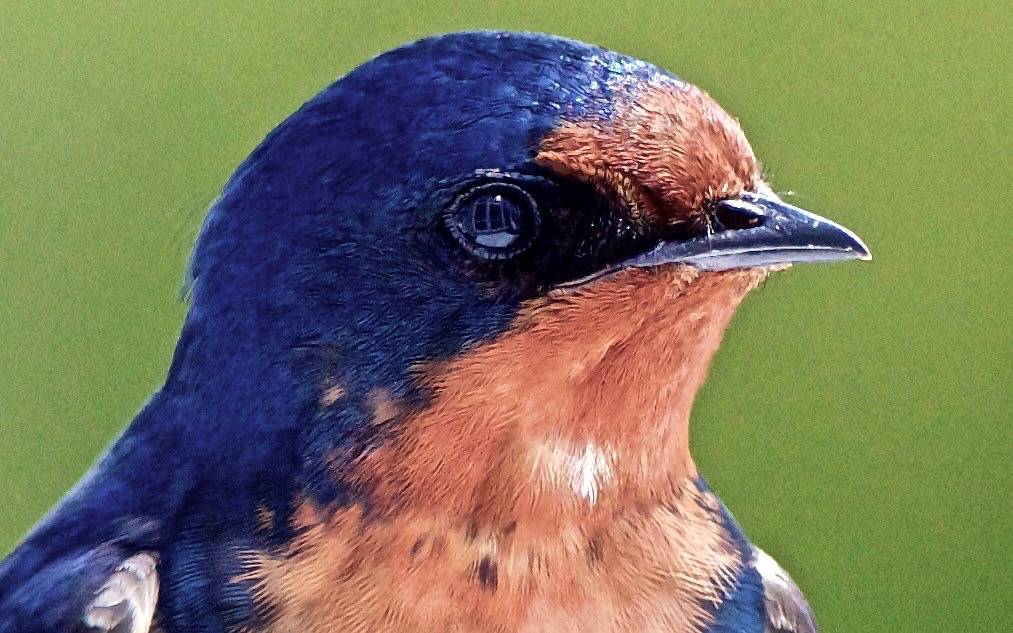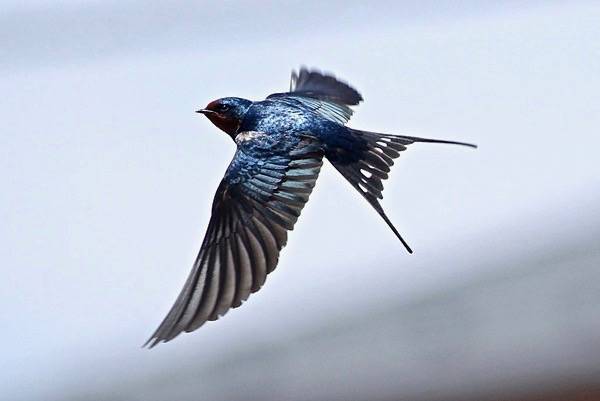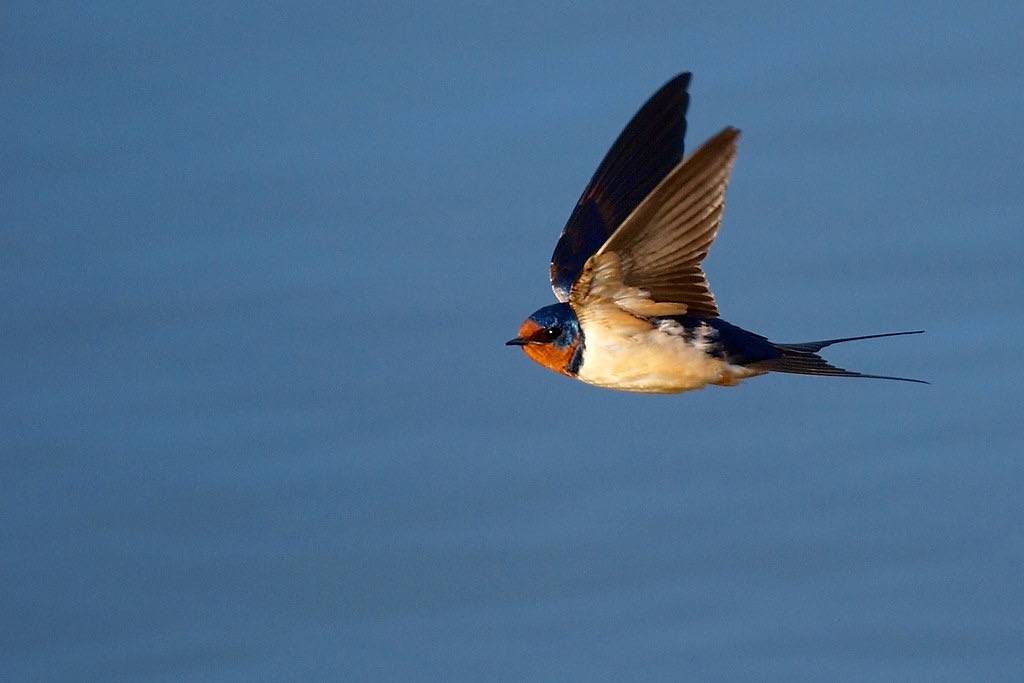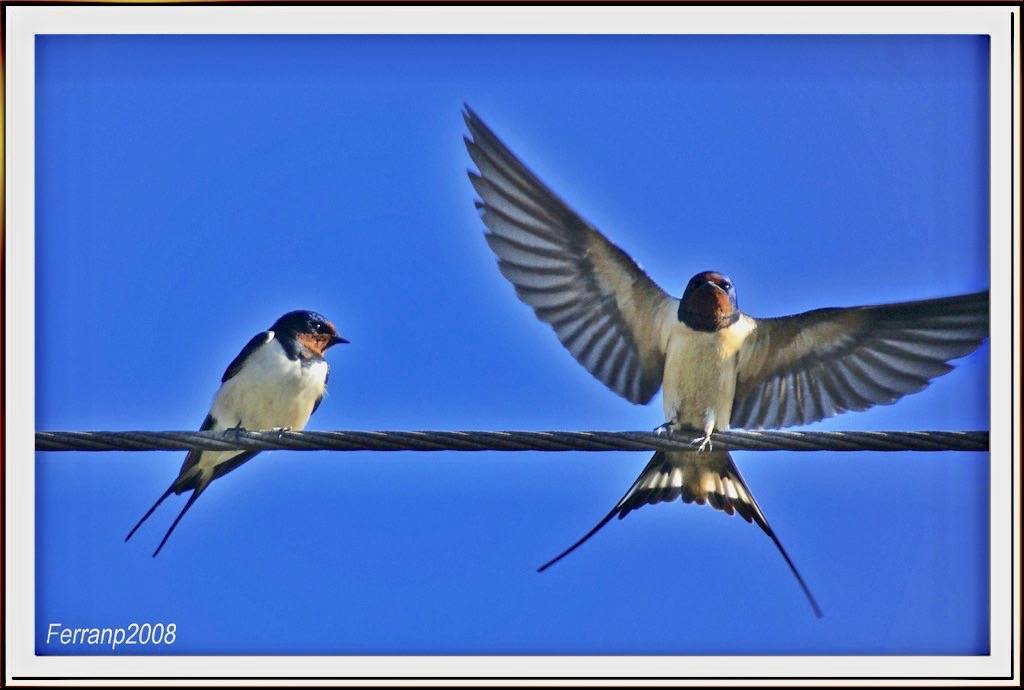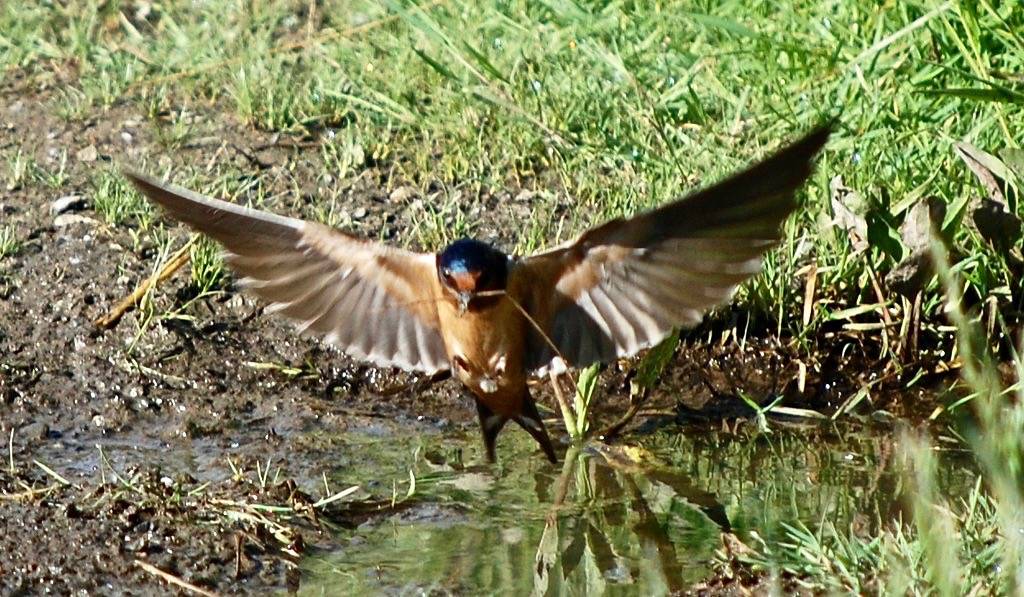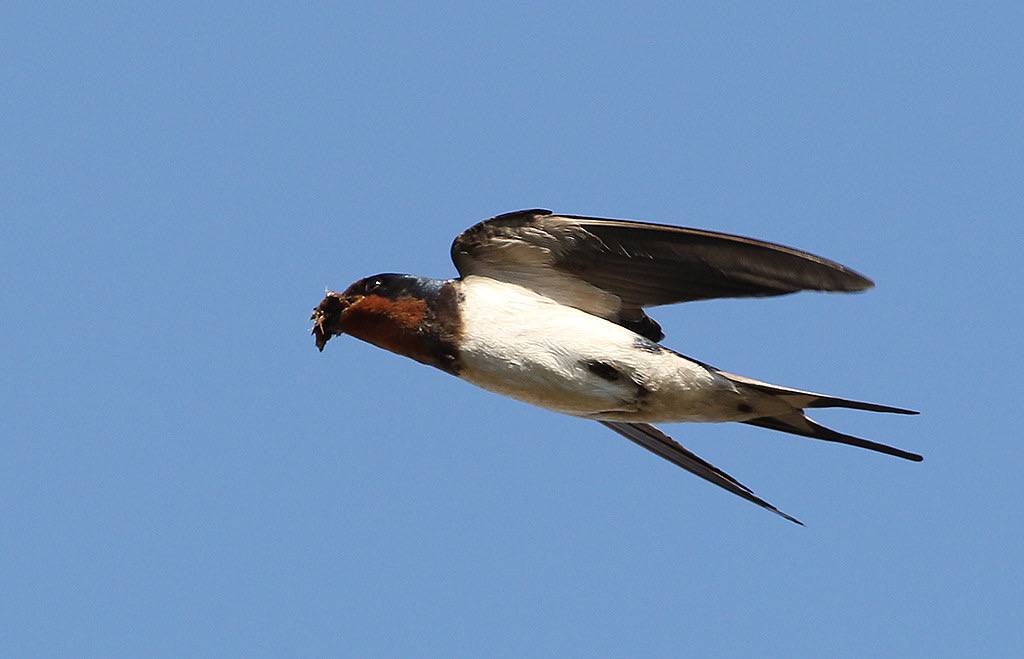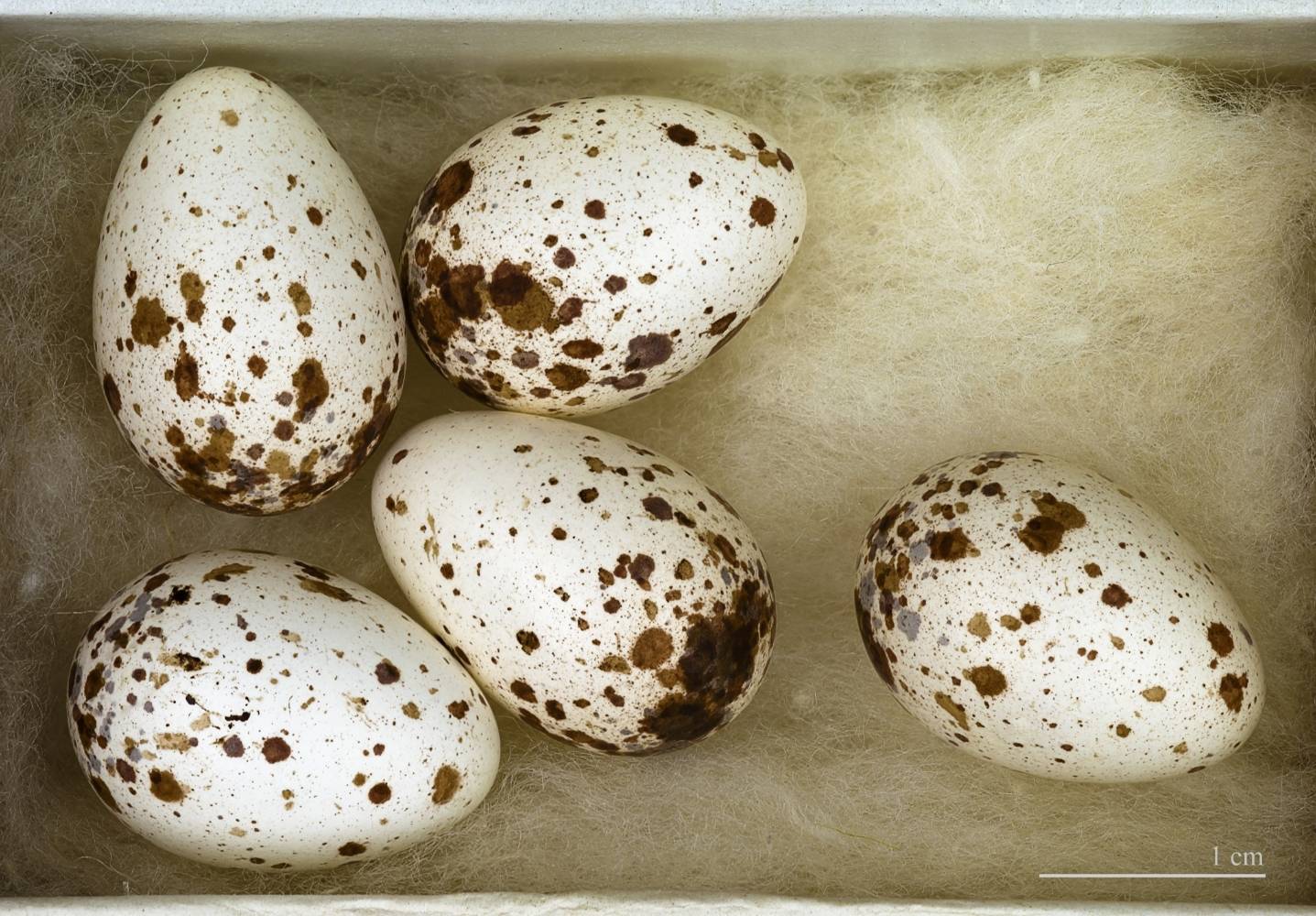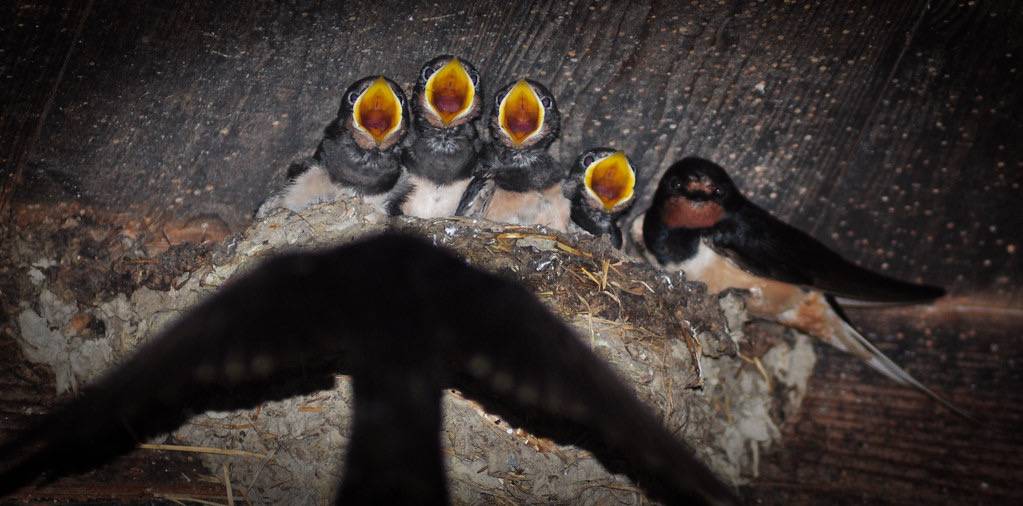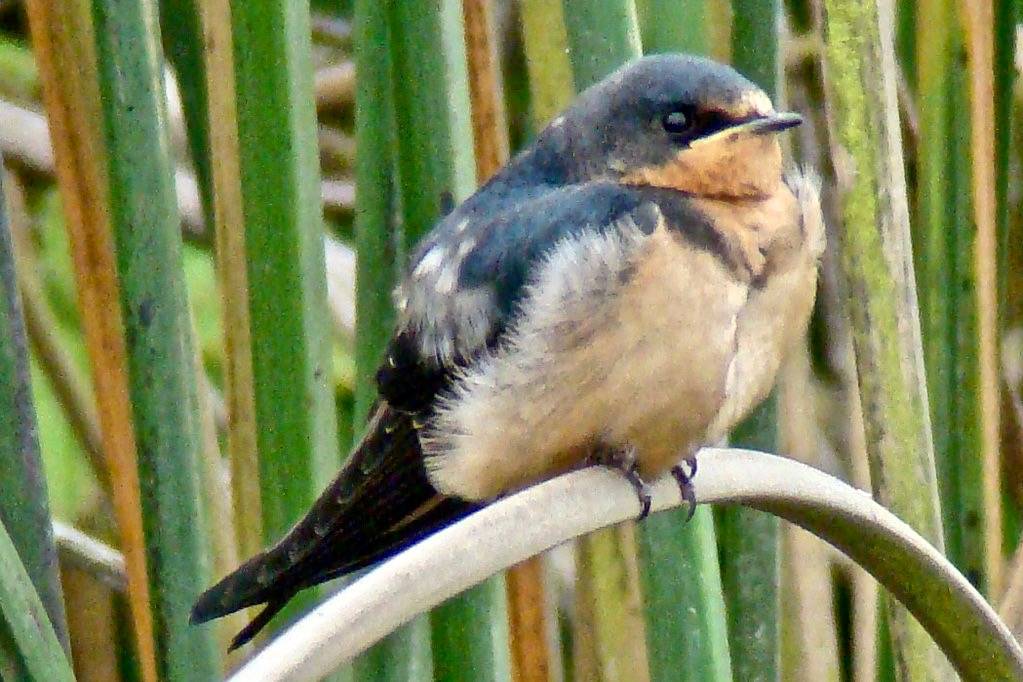Barn Swallow
A bird of open country, Barn Swallows can be seen during the breeding season at Salter Grove flying gracefully over the fringe of shoreline grasses along the causeway, or over lawns near the parking lot.
They are actually feeding while in flight, hoovering into their gaping beaks small insects such as bees, beetles, bugs, damselflies, and flies. Juvenile Barn Swallows can be seen in June and in a good year, as many as two broods of young may potentially be produced during their four month residency in the vicinity of the park. However, a single brood may be the norm because the strong breezes and winds blowing off the Providence River reduce the availability of flying insects.
The Barn Swallow is a rather cosmopolitan species, occurring in Africa, the Americas, Asia, and Europe. An estimated population of 90 million birds ranges over an area of 20 million square miles.
It has been featured in literary and religious references across many cultures because it has lived in close proximity to humans for such a long time, and tolerated because it feeds on harmful or annoying insects.
Unlike the negative impact on other birds, the removal of forested habtat and appearance of man-made structures have increased nesting opportunities manyfold for Barn Swallows. Previously, nest sites were limited to the sheltered crevices of cliffs or shallow caves. Now, there are plentiful possibilities under bridges and wharves, and in easily accessible structures like barns and stables near sources of water.

